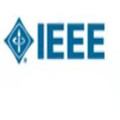Incorporating various mass shapes and sizes in training deep learning architectures has made breast mass segmentation challenging. Moreover, manual segmentation of masses of irregular shapes is time-consuming and error-prone. Though Deep Neural Network has shown outstanding performance in breast mass segmentation, it fails in segmenting micro-masses. In this paper, we propose a novel U-net-shaped transformer-based architecture, called Swin-SFTNet, that outperforms state-of-the-art architectures in breast mammography-based micro-mass segmentation. Firstly to capture the global context, we designed a novel Spatial Feature Expansion and Aggregation Block(SFEA) that transforms sequential linear patches into a structured spatial feature. Next, we combine it with the local linear features extracted by the swin transformer block to improve overall accuracy. We also incorporate a novel embedding loss that calculates similarities between linear feature embeddings of the encoder and decoder blocks. With this approach, we achieve higher segmentation dice over the state-of-the-art by 3.10% on CBIS-DDSM, 3.81% on InBreast, and 3.13% on CBIS pre-trained model on the InBreast test data set.
翻译:将各种质量形状和大小纳入深层学习结构的训练中,使乳腺质量分化变得具有挑战性。此外,对非正常形状质量的手工分解过程耗费时间且容易出错。尽管深神经网络在乳腺分解中表现出了杰出的性能,但它在微成谱中却未能实现分解。在本文中,我们提议了一个新的基于U-net形变压器的建筑,称为Swin-SFTNet,该结构优于乳房造影系统微型质量分解中最先进的艺术结构。首先,为了捕捉全球背景,我们设计了一个新的空间地貌扩展和聚合块(SFEA),将相继线性线性修整成结构化的空间特征。接下来,我们把它与由双向变压器块提取的本地线性特征结合起来,以提高总体准确性。我们还纳入了一个新的嵌入式损失,计算出在以乳房造型和分解器块中嵌入的线性特征之间的相似性。我们采用这一方法,在CIS-DDSMSM(CREDR)前模型上,3.81%的数据设置为313。


